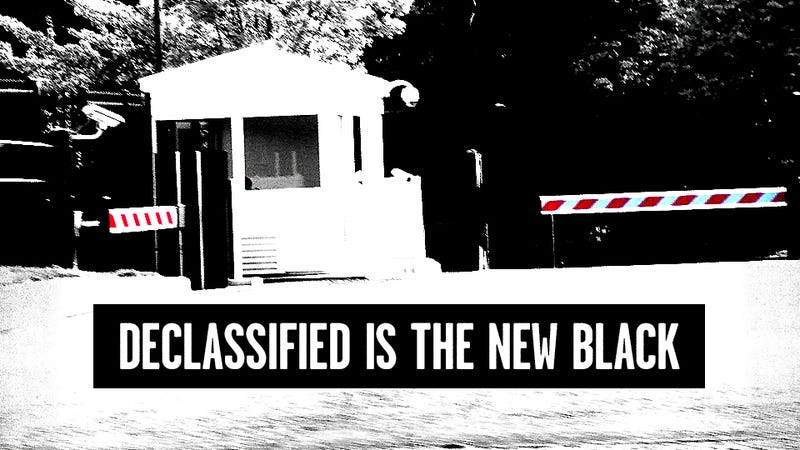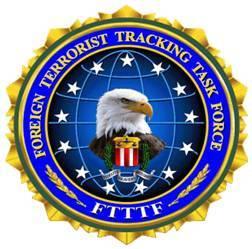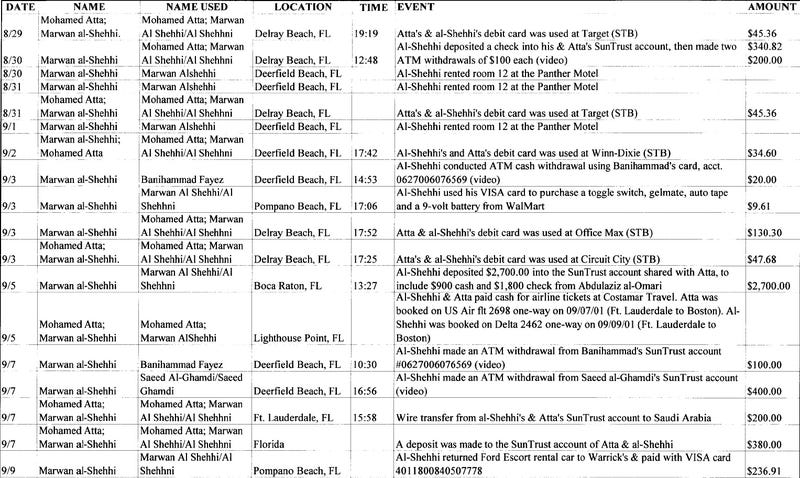 By Sam Prince
By Sam Prince
Edward Snowden is at the epicenter of the biggest intelligence leak in the NSA's history. Here's what you should know about him.
Click here to read more
Turns out, it’s not a new revelation.
No terrorism, no communism, no Nazism…
Just the feds abusing power and ignoring the Constitution.
Here are five milestones in the history of the federal government domestic espionage — starting with the long-lost ancestors of the “NSA.”
1. 1850: Pinkerton Government Services
Originally called the “Pinkerton National Detective Agency,” it was started by Scottish-born American
Allan Pinkerton. Credited with helping foil the
Baltimore Plot, which was an assassination plot on President Elect Abraham Lincoln while he would be en route to his 1861 inauguration, Pinkerton gained notoriety for this and became a confidant of President Lincoln as the Civil War loomed.

In the wake of the Civil War, Pinkerton’s popularity continued to spread in all facets.
One of the more infamous federal uses of the Pinkerton Agency was union-busting during the end of the 19th and early 20th centuries.
The Homestead Strike is one such example. Citing Wikipedia:
During the labor unrest of the late 19th and early 20th centuries, businessmen hired the Pinkerton Agency to infiltrate unions, supply guards, keep strikers and suspected unionists out of factories, as well as recruiting goon squads to intimidate workers. One such confrontation was the Homestead Strike of 1892, in which Pinkerton agents were called in to reinforce the strikebreaking measures of industrialist…
Andrew Carnegie.
Pinkerton Government Services continues to operate to this day as a private security contractor.

2. 1919: The Cipher Bureau, or “The Black Chamber”
Proving to be just as mysterious it sounds, the Cipher Bureau was the United States’ first peacetime federal intelligence agency and is the direct precursor to the modern NSA.
In June of 1917, the first U.S. signals intelligence agency was formed within the Army. Known as “MI-8,” the agency was charged with decoding military communications and providing codes for use by the U.S. military. In 1919, at the end of the war, the agency was transferred to the State Department. Known as the “Black Chamber,” it focused on diplomatic rather than military communications.
Jointly funded by the Army and the State Department, the Cipher Bureau was disguised as a New York City commercial code company; it actually produced and sold such codes for business use. Its true mission, however, was to break the communications (chiefly diplomatic) of other nations. Its most notable known success was during the Washington Naval Conference during which it aided American negotiators considerably by providing them with the decrypted traffic of many of the Conference delegations, most notably the Japanese.
With current allegations, it might not be so presumptuous to say now that Mr. Stimson was alluding to a more domestic abuse of power.

3. 1945: The AFSA / NSA & Project SHAMROCK
A covert operation begun by the NSA’s predecessor, the Armed Forces Security Agency (AFSA), Project SHAMROCK was a government espionage exercise unauthorized by courts and without warrants.
It began in 1945 and continued operating for 30 years, falling under NSA protocol in 1952 after President Harry Truman dissolved the AFSA and secretly created the National Security Agency to allow the Defense Department to continue surveillance activities after World War II.
…a large-scale spying operation designed to gather all telegraphic data going in and out of the United States. The project, which began without court authorization, is terminated after lawmakers begin investigating it in 1975.
The Armed Forces Security Agency (AFSA) and its successor NSA were given direct access to daily microfilm copies of all incoming, outgoing, and transiting telegrams via the Western Union and its associates RCA and ITT. NSA did the operational interception, and, if information that would be of interest to other intelligence agencies was found, the material was passed to them.
“Intercepted messages were disseminated to the FBI, CIA, Secret Service, Bureau of Narcotics and Dangerous Drugs (BNDD), and the Department of Defense.” No court authorized the operation and there were no warrants.
At the height of Project SHAMROCK, 150,000 messages a month were printed and analyzed by NSA personnel. In May 1975 however, Congressional critics began to investigate and expose the program. As a result, NSA director Lew Allen terminated it, on his own authority rather than that of other intelligence agencies.
Sound familiar?
At the 1975 court hearings following the revelation of Project SHAMROCK,
Senator Frank Church(D-ID) was quoted as saying that Project SHAMROCK was “probably the largest government interception program affecting Americans ever undertaken.”
Somebody call Guinness, we have a new record.
4. 1978: Foreign Intelligence Surveillance Act (FISA)
Senator Frank Church leads a select committee to investigate federal intelligence operations. Its report, released in 1976, detailed widespread spying at home and abroad, and concluded that “intelligence agencies have undermined the constitutional rights of citizens.” The Senate Select Committee on Intelligence was created as a check on US surveillance activities.
Senator Church’s report also results in Congress passing the Foreign Intelligence Surveillance Act of 1978 (FISA). It sets up the Foreign Intelligence Surveillance Court (FISC) to consider requests for secret warrants for domestic spying.
The Act created the Foreign Intelligence Surveillance Court (FISC) and enabled it to oversee requests for surveillance warrants by federal police agencies (primarily the F.B.I.) against suspected foreign intelligence agents inside the U.S. The court is located within the Department of Justice headquarters building. The court is staffed by eleven judges appointed by the Chief Justice of the United States to serve seven year terms.
This was the way things operated until 2001, until September 11.

5. 2001-Present: The PATRIOT Act
After nearly three decades of dormancy, FISA erupted back into the news.
October 2001: Congress and Bush rush the USA Patriot Act into law. It gives the government unprecedented authority to search, seize, detain or eavesdrop in pursuit of suspected terrorists. Because of privacy concerns, lawmakers make the eavesdropping provisions and other controversial aspects temporary, requiring renewal by Congress.
December 2005: The New York Times reports that the National Security Agency is secretly eavesdropping on telephone calls and emails of Americans communicating with people outside the United States, without seeking warrants from the FISA court. What becomes known as ‘warrantless wiretapping’ began in 2002 under a presidential order. Critics call it unconstitutional, but the Bush administration says it’s legal.
March 2006: Congress votes to renew the Patriot Act, although lawmakers voice concerns about the government’s broad powers to conduct surveillance and collect data.
May 11, 2006: USA Today reports that the NSA is secretly collecting phone records of millions of Americans in a giant database. Some of the phone companies cited dispute the story.
August 2006: A federal judge in Detroit rules that the NSA’s warrantless surveillance program is unconstitutional because it infringes on free speech, privacy and the separation of powers. The program continues as the case is appealed.
January 2007: Responding to the court challenge and lawmakers’ concerns, Bush suddenly changes course. His administration announces it will begin seeking approval from the FISA court when eavesdropping on telephone calls between the U.S. and other countries in pursuit of terrorists.
August 2007: Congress approves changes sought by the Bush administration to the FISA Act, officially allowing NSA eavesdropping on communications between an American and a suspect foreigner, without a FISA judge’s approval.
May 2011: Congress passes and Obama signs a four-year extension of Patriot Act provisions on record searches and roving wiretaps. Some lawmakers complain that the law doesn’t do enough to protect Americans’ privacy and the disagreement forces the renewal to the last minute.
June 5, 2013: A British newspaper, The Guardian, reports that the NSA is collecting the telephone records of millions of American customers of Verizon under a top secret court order. Security experts say the records of other phone companies are also involved.
June 6, 2013: The Guardian and The Washington Post report that the NSA and the FBI are tapping into U.S. Internet companies, including Google and Facebook, scooping out emails, photos and videos to track foreign nationals who are suspected of terrorism or espionage.
That night, in a rare disclosure, Director of National Intelligence James Clapper reveals some information about the programs to counter what he says is the ‘misleading impression’ created by news coverage.
Clapper says the government is prohibited from ‘indiscriminately sifting’ through the data and can only review it when the query involves a reasonable suspicion that a foreign terrorist organization is involved. Clapper says articles about the Internet program ‘contain numerous inaccuracies’ but does not specify what those might be.
June 7, 2013: Obama defends the programs, saying he came into office with ‘healthy skepticism’ about them and has increased some safeguards to protect privacy. But he offers assurances that ‘nobody is listening to your telephone calls’ or reading citizens’ emails. Obama says privacy must be balanced with security: ‘We’re going to have to make some choices as a society.’
June 8, 2013: For the second time in three days, Clapper takes the unusual step of declassifying some details of an intelligence program in response to media reports. He says the government program for tapping into Internet usage is authorized by Congress, falls under strict supervision of a secret court and cannot intentionally target a U.S. citizen.
Clapper says the data collection had the approval of the secret Foreign Intelligence Surveillance Act Court and was done with the knowledge of Internet service providers. He says media revelations of government intelligence-gathering programs are reckless and give America’s enemies a ‘playbook’ on how to avoid detection.
June 9, 2013: Edward Snowden, a 29-year-old contractor who claims to have worked at the National Security Agency and the CIA allows himself to be revealed as the source of disclosures about the U.S. government’s secret surveillance programs. Snowden tells The Guardian newspaper his ‘sole motive is to inform the public as to that which is done in their name and that which is done against them.’
So now that you know a general history of government espionage, what’s to become of our newest whistleblower Edward Snowden?
Read more here:
NSA Leaker Edward Snowden was seen most recently in Hong Kong but is now on the run. Republican Peter King is calling for his arrest but where is he and what are the charges?
Click here to read more
 Sam Prince is a New York-based actor/writer/producer. Follow him on Twitter @thesamprince or check out his real-time news novel A Quiet War at aquietwar.com.
Sam Prince is a New York-based actor/writer/producer. Follow him on Twitter @thesamprince or check out his real-time news novel A Quiet War at aquietwar.com.















